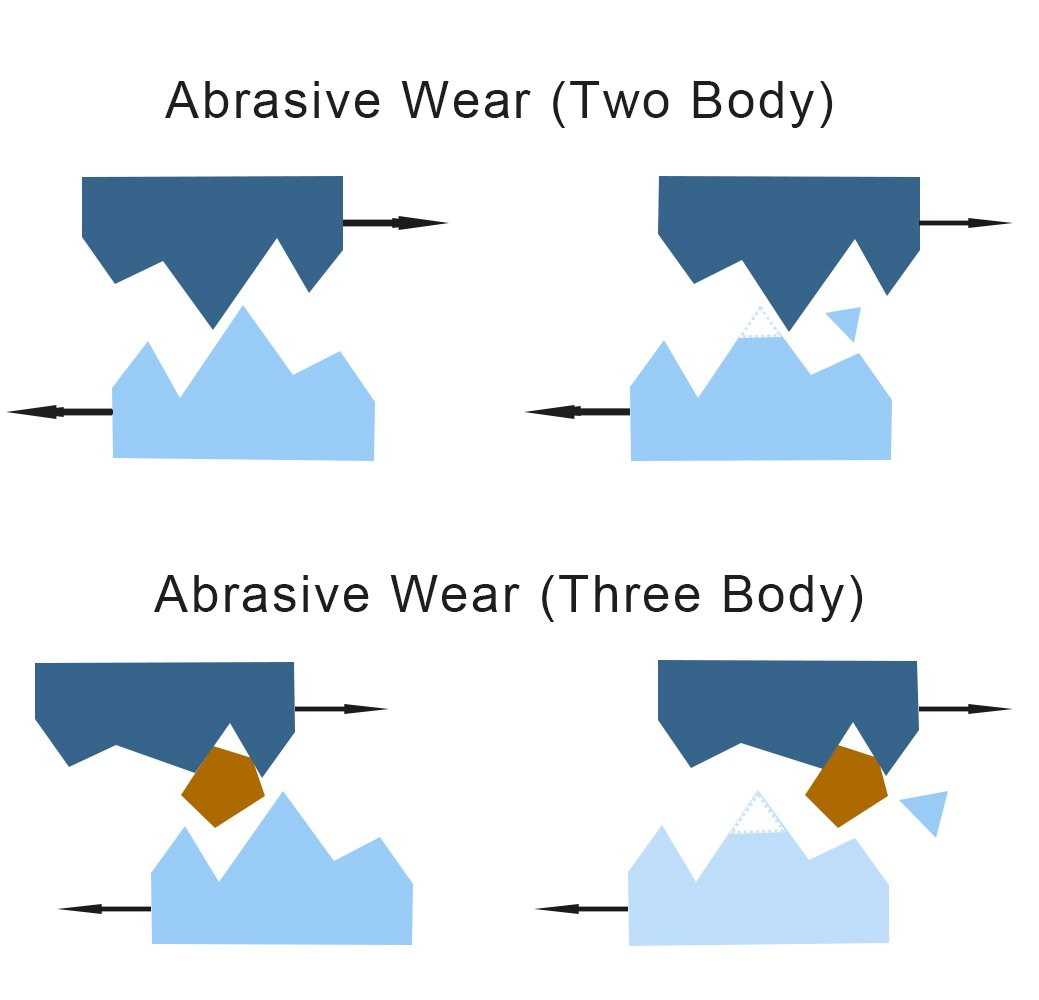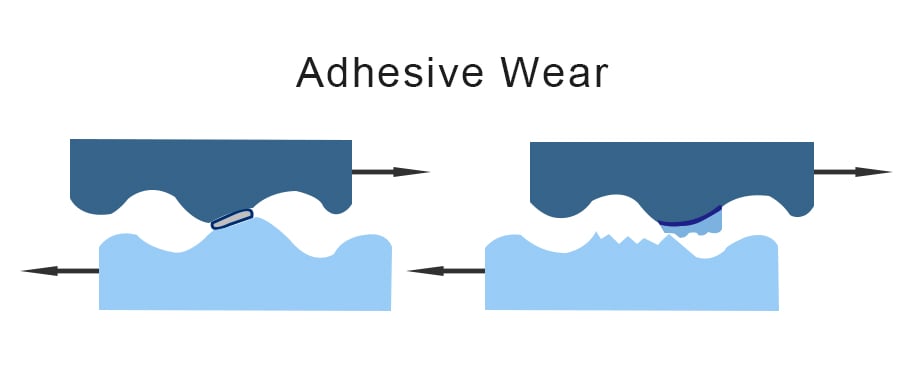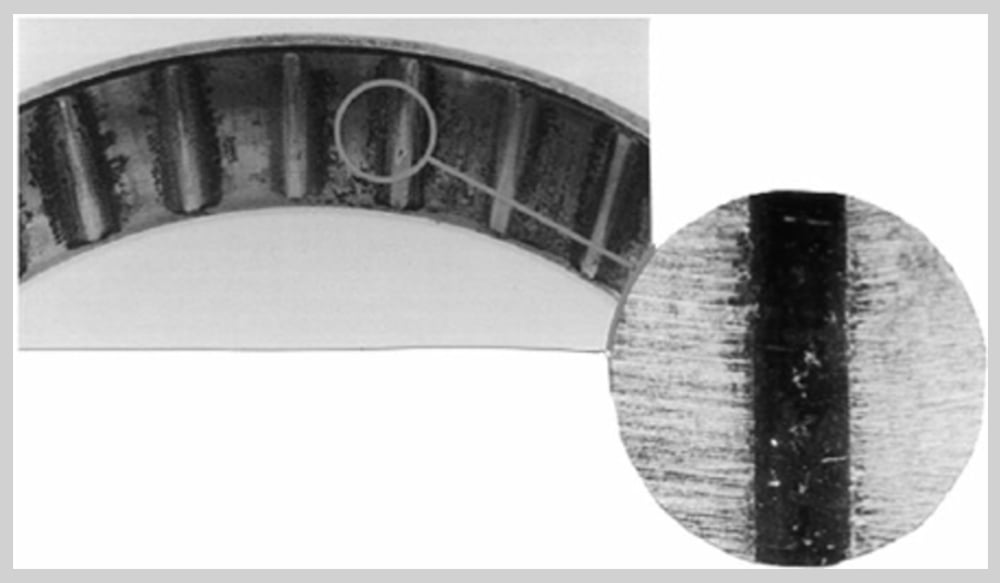An Overview of Bearing Wear
Bearing wear is a significant concern in machinery. It not only hampers the efficiency of the machine but can also lead to premature bearing failure if not properly addressed. In this guide, we delve into the types and causes of bearing wear. We also provide insights into choosing the right grease to prevent premature bearing wear and failure. Let's navigate through this intricate world of wear and solutions.
Bearings encounter different wear patterns during their use. Knowing these signs will help in better maintenance and ensures machinery runs smoothly.
Abrasive Wear
- Abrasive wear arises when a hard surface slides against a softer counterpart, leading to material removal. This is especially evident when foreign contaminants, like sand or metal fragments, invade the bearing lubricant.
- Affected Areas: In ball bearings or roller bearings , the key affected areas are the raceways, rolling element end faces, and ribs. Such wear often manifests as a polished finish, increasing internal clearance and potentially reducing bearing lifespan.
- Causes: The chief culprits behind abrasive wear include inadequate lubrication, foreign particles in the lubricant, and subpar lubricant film formation.
- Prevention Methods: Surface coatings enhance component hardness, and effective lubricant filtering can remove contaminants. In the Wear Debris Check System, sensors are used to detect and categorize metal particles in the lubricant for early wear detection.
- Material Pairing Strategy: Using a hard and a soft surface together can limit wear by allowing abrasive particles to embed into the softer material.

Adhesive Wear
Adhesive wear, commonly termed 'smearing', results from two interacting surfaces sliding, causing material transfer. This wear typically increases with load and sliding distance but reduces with surface hardness.
Causes
This wear stems from the angular acceleration of rolling elements, leading to material transfer between ring raceways and rolling elements, often seen as scuffing or scoring marks.
Remedies
- Use hard materials or apply surface treatments, such as chromium or nickel plating.
- Consider design modifications: change bearing types or use different cage designs.
- Implement black oxide coatings on bearing parts for added protection.

Fretting Wear/Corrosion
Fretting wear, or 'Tribo-corrosion', occurs on bearing raceways due to insufficient lubrication, leading to metallic contact and evident oxidization, often seen as red or black iron oxide.
Causes
- Micro-motions between fitted parts
- Component shape deviations
- Shaft deflection or housing deformations
- Absence of axial preloading
Remedies
- Follow the bearing manufacturer’s mounting guidelines for the appropriate fit.
- Enhance the rigidity of the shaft or housing.
- Use the tightest possible bearing seats.
- Apply coatings to bearing seats for added protection.

False Brinelling
False brinelling occurs during stationary bearing operation due to minor axial movements of the rolling elements, causing wear-like indentations on the raceway without the protective barrier of an oil film.
Damage
Wear marks, typically brown from corrosion, show distinct hardening, especially in ball bearings, with clear boundaries separating them from adjacent surfaces.
Remedies
While there are situations where false brinelling is unavoidable, such as during ocean freight shipping of machinery, measures can mitigate its occurrence:
- Reducing movement and static weight during transport.
- Using bearings with greater radial clearances.
- Selecting lubricants with anti-wear additives.
Distinguishing it from true brinelling involves examining the wear: false brinelling erases the surface texture, while true retains it.

Selecting the Right Grease for Rolling Bearings
To combat bearing wear and ensure the optimal performance and longevity of rolling bearings, the right lubrication choice is crucial.
Grease Characteristics and Classification
Base Oil Type and Viscosity
Grease performance is heavily influenced by its base oil type. This component determines the lubricant film's formation. Commonly used base oils include mineral and synthetic oils. It's essential to recognize that synthetic oils vary—like polyalphaolefin, polyglycol, and ester—each having distinct characteristics.
Thickeners
Thickeners play a pivotal role in grease consistency. Metal soaps, metal complex soaps, and emerging organic or polymer thickeners like polycarbamide are typical thickening agents.
Additives
All greases contain additives, categorized by their effects. Some additives influence the oil itself, such as oxidation inhibitors and detergents, while others, like anti-wear additives and corrosion inhibitors, affect the bearing or metal surface.
NLGI Grades
Greases are classified by their principal components: thickener and base oil. Their consistency is determined by NLGI grades, based on the 'worked penetration' per ISO 2137. A higher NLGI grade denotes harder grease. For rolling bearings, greases of NLGI grades 1, 2, or 3 are preferred.
Factors Influencing Grease Selection
To reduce bearing wear, selecting the appropriate grease is crucial. Various operational and environmental factors influence this choice, directly impacting bearing longevity and efficiency.
Bearing Type
- Point Contact (Ball Bearings): Only a small volume of grease is strained, requiring a base oil viscosity of ISO VG 68 to 100.
- Line Contact (Roller Bearings): These demand greases with higher viscosity (ISO VG 150-460) due to larger strain and potential for sliding.
Speed
Match the speed parameter of the bearing to the grease. High-speed bearings require greases with high-speed parameters and vice versa.
Temperature
- Grease's temperature range should align with the bearing's operational temperatures.
- Factors include grease’s upper and lower operating temperatures and its dropping point.
Load
For significant loads, greases with higher base oil viscosity and anti-wear additives are essential to prevent wear, especially under combined radial and axial loads.
Water and Moisture
- Water damage can be due to grease aging, hydrolysis, or interrupted lubrication.
- Greases with barium- and calcium-complex soaps are preferred in damp environments due to water resistance.
- Oscillations, Shocks, and Vibrations: Oscillation loads can affect grease consistency, leading to potential issues.
It's crucial to choose greases with proven mechanical stability to prevent changes in consistency.
Seals
- Grease can enhance sealing by forming a collar on the bearing seal, but the choice is dependent on the seal type.
- More solid-type greases prevent the ingress of contaminants, while softer greases can lead to leakage.
Mounting Position and Adjacent Components
- For vertical or inclined axes, more viscous grease is essential to remain in place.
- When multiple lubrication points are nearby, ensure lubricant compatibility or opt for a single compatible grease.
Conclusion
In this blog, we delved into the complexities of bearing wear, examining bearing wear patterns and referencing a bearing wear chart for in-depth understanding. It is imperative to comprehend bearing wear to make informed decisions regarding lubrication. Selecting the appropriate grease is vital for reducing wear and ensuring machinery reliability. Lily-bearing is committed to providing reliable bearings to meet these needs.
Keep Learning








